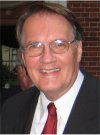
By: James G. Apple, Editor-in-Chief, International
Judicial Monitor and President, International Judicial Academy
Several weeks ago I was
preparing for a meeting with some judges from the Peoples Republic of China. The
topic of discussion was to be legal journalism, that is, how some selected
media organizations provide their audience, through newspapers, magazines and
other forms of mass communication, with information about courts and judges. I
collected several issues of a prominent weekly legal newspaper in the United
States. In reviewing some of the issues of this publication in preparation for
my presentation, I noticed one prominent headline in an April, 2013 edition:
“Judges Cracking Under Pressure.” The accompanying news story described how
some judges from different parts of the United States had engaged in bizarre
behavior in the performance of their judicial duties. Here is the opening
paragraph:
A Florida judge bounds
out of his seat behind the bench and screams at an attorney for what
he claims was her bad attitude. A West Virginia family court judge
yells furiously at a litigant in a divorce case. The judge tells the man, who
happens to be a church pastor, to “shut up” or go to jail. A trial judge in
Tennessee shouts at an attorney during a deposition to do his bidding or risk his
wrath.
The commentary in the story stated
that some legal experts “argue that the intense pressures placed on judges
these days are stoking those flared tempers.” Some of those pressures are
derived from “overloaded dockets and stagnant pay.” The crux of the story was
that judicial disciplinary actions caused by unstable or erratic behavior are
on the rise in many parts of the U.S.
The view that judges,
especially trial court judges, are exposed to a large amount of pressure is not
a new observation. I often hear comments from judges around the world about the
pressures placed on them because of the number of cases assigned to them or the
circumstances under which they do their work. Is there anything that can be
done to correct this problem?
The consequences
of pressure on judges in one instance led to a new kind of judicial education,
a type that might be called non-traditional education. This non-traditional
type of judicial education began in Massachusetts, in the northeast part of the
United States. Several years ago the Chief Judge of the Massachusetts District
Courts, Judge Samuel Zoll, had personal experience with the pressures being placed
on judges in his courts. He recognized that many cases coming before the courts
involved issues that went beyond the mere application of some legal principle.
There were very often issues of human values that required something other than
knowledge of statutes, regulations, and legal principles. These issues
frequently involved intense emotional matters, which placed added strain to the
tasks of the judges. Law was only one dimension of complex controversies
requiring the judges’ attention. As one commentary noted, “ Judge Zoll became
“acutely aware of the toll the daily burdens of the trial courts were having on
his judges. The daily grind of the courtroom created, in his mind, the need for
something inspirational for his judges – an experience that would uplift them
and provide insights into human conflicts with which they were confronted” on a
daily basis. He decided to do something about it. He founded, almost single
handedly, the “law and literature” movement.
In establishing the program, Chief Justice Zoll “recognized a fundamental
need for judges, in the cases before them, to look into deeper issues involving
the use of power, ethics, family relations, conflict, and community perceptions
in order to resolve the disputes.” He secured the assistance of two professors
at a university in Boston. According to one of the professors, “Chief Justice Zoll’s
contribution was his ability to see a need, match the resources to meet the
need, and institutionalize the program in the judicial system.”
The
then Massachusetts Supreme Court Chief Justice Edward F. Hennessey, fully
supported the program and invited all district court judges to attend this new
program. While attendance wasn’t mandatory, every judge did attend the first
program. Groups of judges gathered on the campus of Boston’s Brandeis University
and discussed moral, ethical, and personal conflicts arising out of their
study of works of literature. Chief Justice Zoll’s leadership for the program
included consistent commitment over the long-term. “Judge Zoll was present at
each of the pilot
programs,” said the college professor. “That had an enormous impact. And his insight
into court administration and processes proved to be invaluable.” Word
spread quickly,” Chief Justice Zoll explained. “We could not keep judges away.
They wanted to come back a second and third time.” He commented, “It was
probably the only program we proposed that had the unanimous support of all of
the judges.”
Chief Judge Zoll commented about the program: “The
demands of the job require an intellectual ability to focus intensely, to have
a firm philosophical foundation, and to understand the sociological
consequences of judicial decisions,” Law and literature programs should be an
integral part of a professional, modern court.” Judges participating in the law
and literature program left the discussions with “a stronger and deeper sense
of what they are doing.” He observed that there continues to be a “strong
desire of judges to have somewhat structured, reflective periods to help them
do their work.”

 International
Judicial Monitor
International
Judicial Monitor